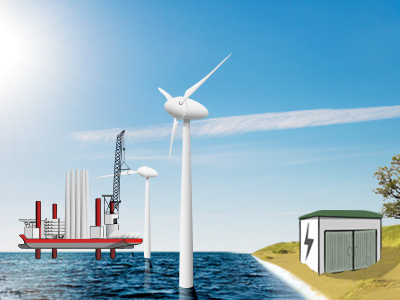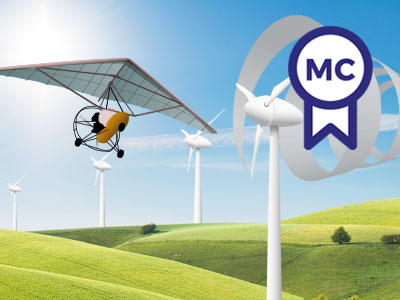Overview
This course is for engineering professionals who want to learn about the technical disciplines involved in floating wind energy and their relevance for the design, installation, operation, and maintenance of these turbines and farms. It can also be valuable for professionals who need a technical understanding, such as industry stakeholders, regulatory professionals or business leaders.
Note: the number of seats for this course is limited and allocated on a first-come, first-served basis.
Floating wind turbines represent a major innovation in offshore wind energy, enabling power generation in deeper waters where stronger and more consistent wind resources are available—areas where fixed-bottom turbines are not feasible.
As the industry advances, a deeper understanding of the unique engineering challenges associated with floating wind turbines (including aerodynamics, hydrodynamics, wind turbine control, logistics, etc.) is crucial for optimizing performance and reducing costs. To address these challenges, this course is designed to provide you with a comprehensive overview of the principles governing floating wind turbines, equipping them with the expertise needed to contribute to projects in this rapidly evolving field.
Taught by experts from various technical disciplines, the course will provide you with insights into the interdisciplinary nature of floating wind turbine technology and the interactions between these disciplines. Additionally, it covers state-of-the-art modeling and experimental techniques used to tackle the challenges associated with floating wind turbines.
You will do so by following video lectures, readings, quizzes and an assignment. You will have the chance to interact with other professionals in the field and share knowledge and experience through online forums.
The course is designed for engineering professionals seeking to understand the technical disciplines involved in floating wind energy and their role in the design, installation, operation, and maintenance of turbines and farms. It is also valuable for industry stakeholders, regulatory professionals, and business leaders who need a technical understanding of the unique challenges in floating wind energy.
What You'll Learn
- Explain the need for floating offshore wind energy in the current energy transition, with its challenges and opportunities.
- Explain how to characterise metocean conditions and their impact on the dynamics of the floating system.
- Understand the basics of floating wind turbine control.
- Describe the different installation, operation and maintenance procedures for floating wind turbines
- Outline the future landscape of floating wind energy.
Details
Course Syllabus
Week 1: Introduction to floating wind
The need for floating offshore wind energy in the current energy transition; components of a floating wind turbine; the challenges of floating motion during the turbine lifetime.
Week 2: Aerodynamics
The coupled system of floating wind turbines; floating-specific aerodynamic challenges and their impact on the design.
Week 3: Hydrodynamics
Characterization of waves, currents, and sea state, and the associated dynamics of a floating structure. Floating-specific hydrodynamic challenges and their impact on the design.
Week 4: Coupled modelling and testing
Aerodynamic and hydrodynamic modelling and experimental techniques for floating wind turbines; Wave-induced motion in six degrees of freedom through solving the equations of motion. The effect of floating motions on loading and performance.
Week 5: Moorings, anchors, and dynamic cables
Dynamics of moorings and anchors; The need and challenges for dynamic cables.
Week 6: Control
The basic principles of wind turbine control; challenges and opportunities of floating wind turbine and farm control.
Week 7: Logistics and system outlook
Installation procedures for floating wind turbines; supply chain challenges for floating wind farms; basics of MDAO for floating wind farms; advantages and disadvantages of alternative concepts; future landscape of floating wind.
Qualifications
Certificates
If you successfully complete this course you will earn a professional education certificate and you are eligible to receive 3.2 Continuing Education Units (CEUs).
Admission
This course is primarily geared towards working professionals.
Prerequisites:
Basic engineering or scientific background.
Contact
If you have any questions about this course or the TU Delft online learning environment, please visit our Help & Support page.



